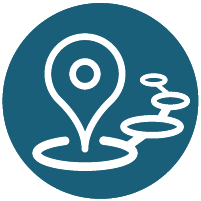Solving the Puzzle: Putting the Pieces Together Via Computational Thinking
,
Marriott Rivercenter - Grand Ballroom GM
Session description
Outline
Introduction (20 mins)
- Welcome & introductions
- Overview of computational thinking concepts
- Opening Activity using Computational Thinking
Core Computational Thinking Concepts (20 mins)
Simple Sudoku Puzzle
- Decomposition - Breaking down problems into smaller, manageable parts
- Pattern Recognition - Identifying patterns, trends, similarities in data/problems
- Abstraction - Focusing on important information only, ignoring unnecessary details
- Algorithms - Steps/instructions to solve problems
- Demonstrate each concept with Spheros activity
- Programmer
- Debugging
Applying Computational Thinking (30 mins)
- Small group design challenge using Spheros or station rotation depending on participants preference (https://docs.google.com/document/d/1wtxNjIWmtMCyKYZhSNdto0ZYtdxSt7JyDX98-bvUNsc/edit)
- Identify a problem
- Use computational thinking to break into parts & develop step-by-step algorithm to solve
- Groups present solutions
Wrap Up & Discussion (20 mins)
- Review key concepts
- Discuss applications for the classroom
- Q&A
- Resources for further learning
- Complete workshop survey
Supporting research
Computational Thinking and Coding for Every Student: The Teacher’s Getting-Started Guide {Book} by Jane Krauss & Kiki Prottsman
ISTE Computational Thinking Standards - https://drive.google.com/file/d/15aITFHbOU88W2R1GJZy8QwkKbPjYlOph/view?usp=sharing
Collaboration of Unplugged and Plugged Activities for Primary School Students: Developing Computational Thinking with Programming Article (International Journal of Computer Science in Education, May 2024)- https://drive.google.com/file/d/1MKG8mNDyo4Vf_fIb2pVLpeYMtHMSCeDL/view?usp=sharing
Presenters



Session specifications
Topic:
Grade level:
Audience:
Attendee devices:
Attendee device specification:
Laptop: Chromebook, Mac, PC
Tablet: Android, iOS, Windows
Participant accounts, software and other materials:
Subject area:
ISTE Standards:
Computational Thinker
- Formulate problem definitions suited for technology-assisted methods such as data analysis, abstract models and algorithmic thinking in exploring and finding solutions.
- Break problems into component parts, extract key information, and develop descriptive models to understand complex systems or facilitate problem-solving.
- Understand how automation works and use algorithmic thinking to develop a sequence of steps to create and test automated solutions.

 Back
Back Trips and Tours
Trips and Tours Preregistration Required
Preregistration Required